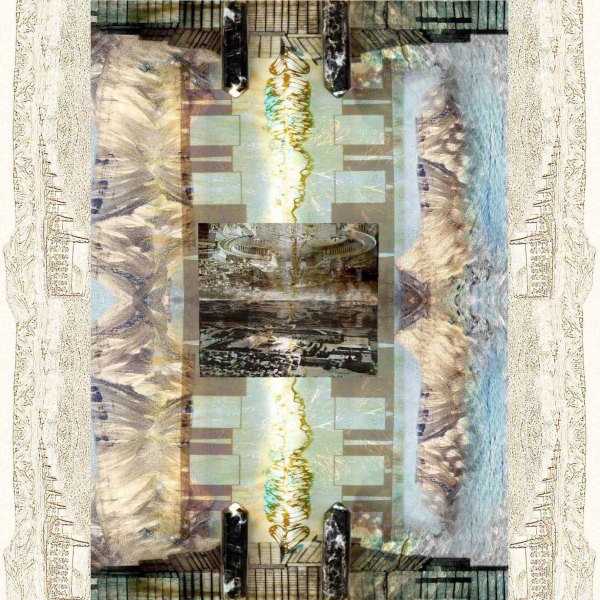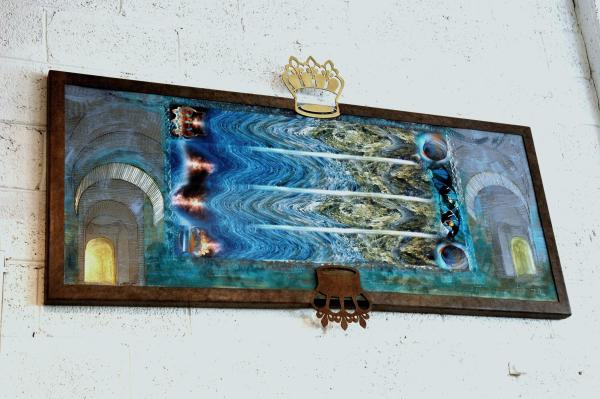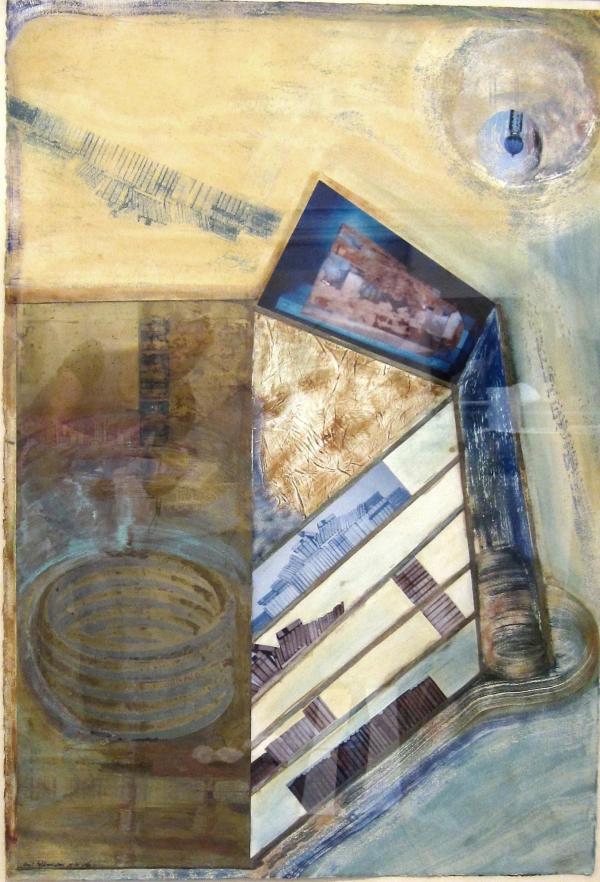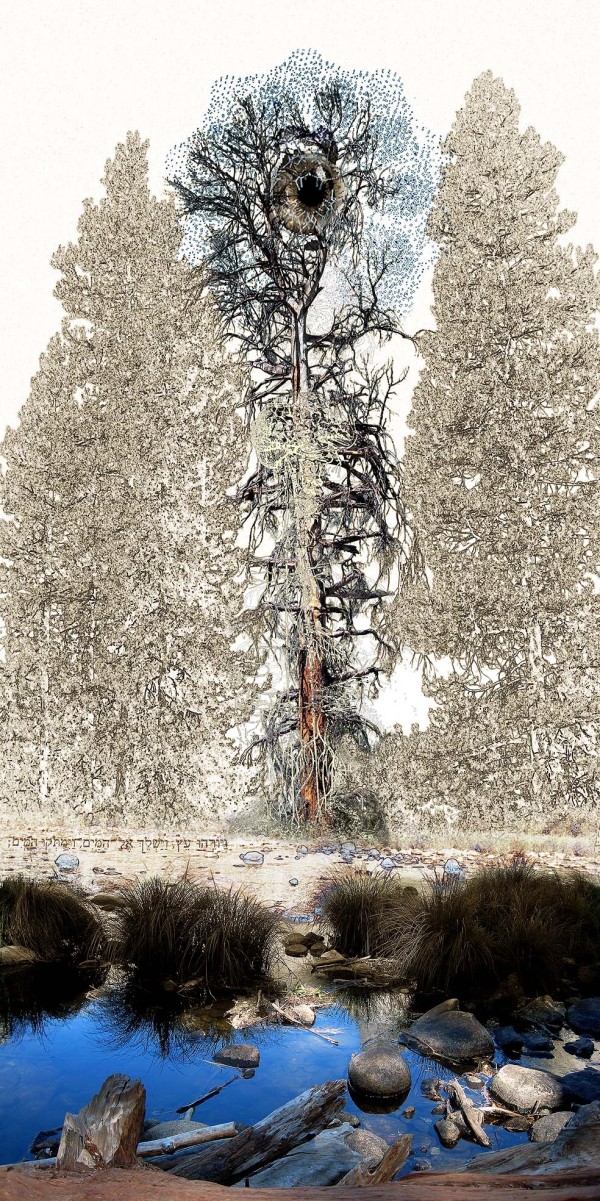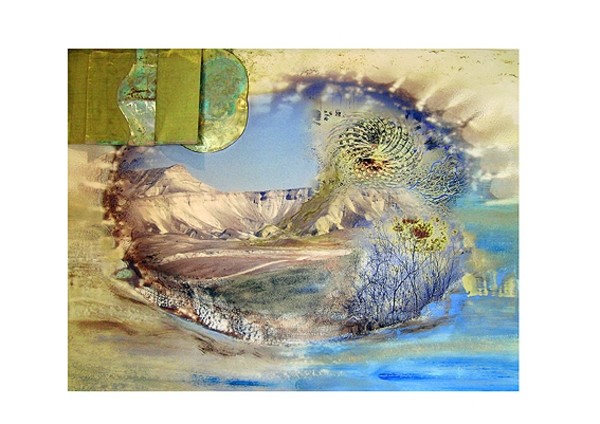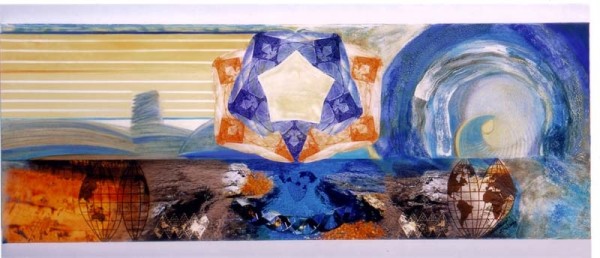Palimpsest: The Signature is still being Signed
A map legend for Dorit Feldman's series "Geophilosophy"
According to Vilém Flusser, in his book Towards a Philosophy of Photography, "with writing, a new
ability was born called 'conceptual thinking' which consisted of abstracting lines from surfaces, i.e.
producing and decoding them."1 As an artist and a conceptual photographer, my practice involves a
reversed reflexive process, antithetical to the one described below. Inspired by philosophical texts,
following an invitation for a dialogue as a form of collaboration with contemporary poets and writers,
I create works which correspond with the surface and project images thereon. By choice, most of
the photographed geographical loci introduce orderly geometric spaces, expanses which resemble
text written on the ground. The conceptual visibility is enhanced by scanning and processing
concise sketches of old, original maps. As the key motif for the series "Geophilosophy" I opted for
the Dead Sea, as depicted by cartographer Christian van Adrichem. The choice of the Dead Sea
(Mare Mortuum) signifies its reconstruction and metamorphosis from a sea of forgetting into a sea
of memory, from a sea of death to a source of regeneration, thanks to the minerals and fresh water
springs trapped under the strata of salt. The making of the works is anchored in the rhizome theory
developed by French philosophers Gilles Deleuze and Félix Guattari, maintaining that reality is akin
to a web comprising a set of interconnected objects which intersect at nodes or plateaus. The
current intersection, a meeting point with Zali Gurevitch's text "Landscape's Signature" calls for a
dynamic process of visual reading, whereby "the signature is still being signed"…
Dorit Feldman
Notes
1. Vilém Flusser, Towards a Philosophy of Photography (London: Reaktion Books, 2000), p. 11.
Landscape's Signature
(excerpts)1
Zali Gurevitch
When Saul Tchernichovsky described a homeland, he used the term "landscape's form": "Man is
nothing but a little plot of land, / Man is nothing but the image (literally, mold or form) of his native
landscape."2
The Hebrew word for landscape, nof, is tied to the words denoting momentum (tnufa) and
leverage (hanafa), hence its denotation as something seen from above, from a distance.3 Today a
landscape may also be observed through an airplane window. Entire cities and countries pass
under one's gaze, under the clouds. Google furnishes anyone using a computer with a landscape
photograph from a spaceship altitude. The blue planet Earth is identified when looking from the
moon. The notion of "horizon" has changed, and with it—the boundaries of what was heretofore
designated "landscape." The skyline itself, however, has not disappeared. A landscape needs a
line between heaven and earth, between the earth and space. Space, too, is sky, a backdrop for a
figure, and it, too, is harnessed to the "landscape" regime.
Space does not only surround the terrestrial landscape, it also dwells within it. A landscape
captures the space within which it is placed. Space is the medium engulfing the landscape. A
photograph of an underwater landscape unfolds not only the coral reefs and the colorful creatures
sailing between them, but also the water, the depth of the ocean, the sea floor, and everything that
fills the space above it. Even a flattened landscape in an abstract painting is not bereft of a concept
of space; its flatness is an elimination of space and its collapse onto the canvas. Landscape
painting is an invitation to pay attention to space.
Two movements comprise the so-called "landscape": one is positioning oneself outside the
space in order to observe it, to grasp it, to put it into a "box"; the other is entering the landscape, so
that the landscape is all around.4
In the former, convergence is the gist, hence interest lies in
perspective and all that it entails. The latter is centered on the surroundings, on wandering, walking,
moving through. The landscape combines these two movements, even if they are not easy to
combine.
This dichotomy has been noted by critical anthropologists in recent years in reference to the
question of the anthropologist's gaze at his "research subject." The critique bases itself on the
realization that the spectator's gaze, attempting to frame and grasp the studied reality, tends to
disregard the fact that s/he is part of that same field, and hence influences it in various ways. The
double perception, which requires an external gaze at the gaze from within (and vice versa), implies
exiting the landscape and entering it at the same time, being both inside and outside, far and near,
alienated yet present at every given moment.
This dualism is also elucidated through the principle of the continuity of the surface. The
plane of the earth is not breached even when it folds to become a mountain, or when it sinks inward
to form a canyon, a crater, or a valley, or even when it is flooded by sea. The landscape stretches
from one's feet and unfolds to the distance, yet returns back to the feet; the eyes that yielded to the
landscape, wandered, were swallowed by it, now come back to the feet, which interrupt the view
and resume walking. Even when observing the landscape from a tall mountain, the feet touch the
ground.
When one observes one's surroundings, and attempts to pinpoint the indigenous signature
or imprint of the landscape, the principle of continuity—how to be a part of what you observe—is
crucial: the observer is also the observed, the landscape reflects the one observing it. It is not only
an object at the end of a beam of vision, an object to look at, nature morte. The "landscape"
phenomenon is in a loop, hence indeterminate: in-between an entity and a field or a plane in and on
which it is given; in-between the naked gaze and the sealed gaze, which dresses the landscape
with its own images. At the same time, it also lies between these two loops—between ontology and
epistemology, what is all this from which I come and in which I dwell, and yet I observe it from a
distance and inquire.
This loop quality of the landscape in itself attests to its indeterminacy, to its being inbetween two elements: reality and imagination, inside and outside, place and sign, mine and not
mine, me and not me. The other is always present, hence the loop and the constant movement
between the two poles. This presence of the other introduces another dimension to which the
landscape is tied: being beside nature, as being beside someone else; not in nature and not
outside nature, but beside nature.
Add to this the temporal dimension. A signature seals the sight with "specificity"; it stains
and covers it, but in itself, it is open to changes, because it involves opened eyes, a new glance,
familiarization, departure, creation. A sign does not stand in place. The landscape is indeed sealed
and imprinted, but it is continuously formed—the signature is still being signed. Self-signature
likewise changes. The same self, the same name, the same life, but it is not the same self that
speaks, that says I.
The signature casts itself on the earth (or the canvas) on several levels. Most plainly, it is a
trace of being, of walking, of observation, but it also seals, fixes a given form and the space around
it, both physical and abstract (which is made of language, memory, discourse, and countless
artifacts). It binds some "sack of the world" or a "cultural bubble," thereby affirming their existence
and their uniqueness. At the same time, it also tells the story which preceded it, a signature upon a
signature, an imprint upon an imprint, a palimpsest.
This is the quintessence of the Israeli landscape—layer upon layer: layers created over the
past century of conquering and forming the Israeli landscape, on the one hand, and the
archaeological strata peeking from below, on the other. The land is furrowed, grooved with the
tracks and traces of heroic plots and a myriad battles, earthquakes, mounds, rolling stones.
Nevertheless—it develops rapidly, evolving by leaps and bounds.
Zali Gurevitch is a Tel Aviv-based poet and a Professor Emeritus of Anthropology at the Hebrew
University, Jerusalem
- Current Location: Studio



